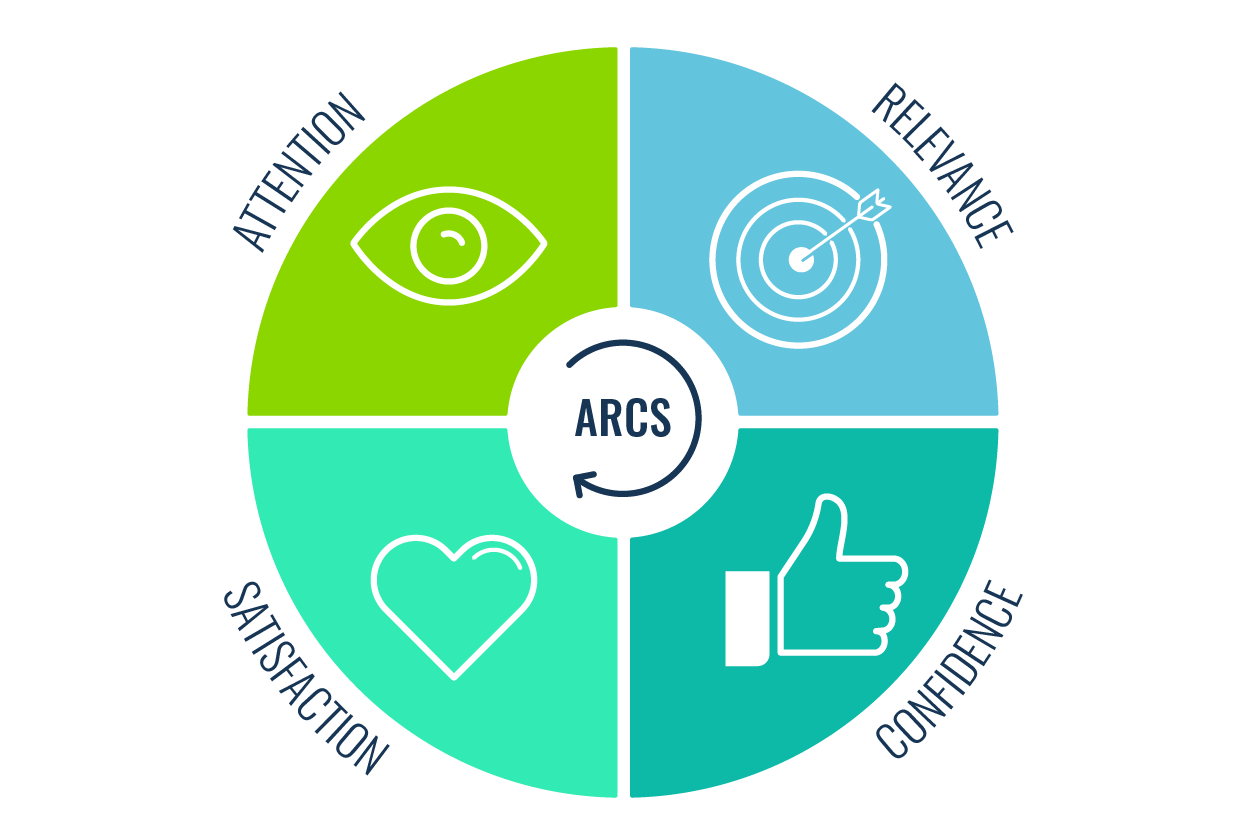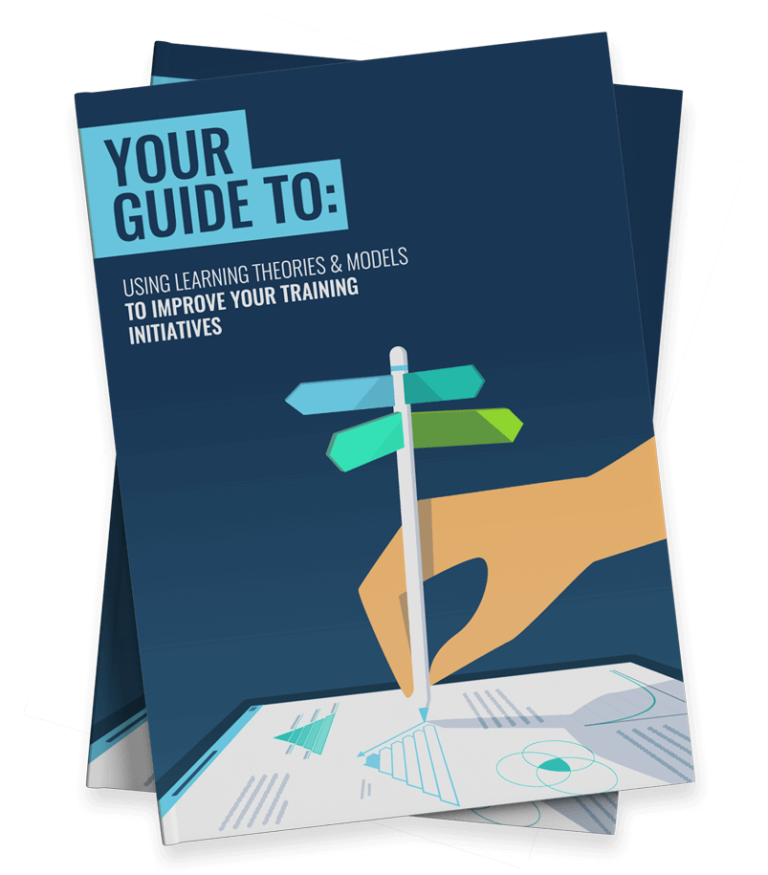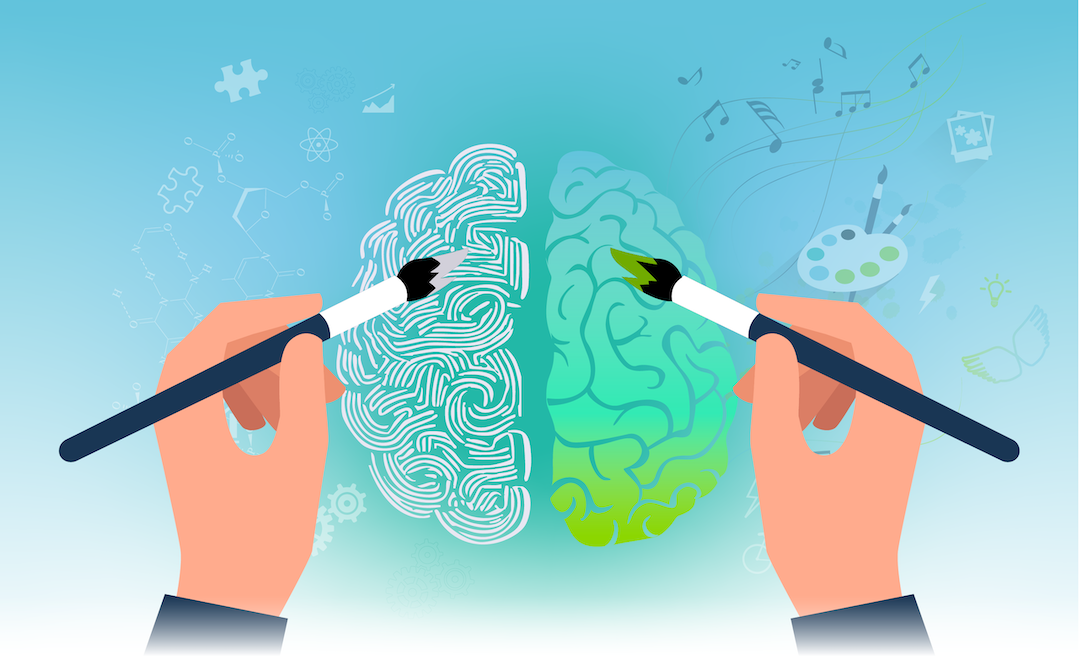
Motivation is magical. Unfortunately, in the world of learning and development, it’s often hard to come by. Thankfully, the ARCS Model, a powerful instructional design framework, offers a practical approach to keeping your learners engaged and motivated.
After all, creating good instructional content is only half the battle. You also have to ensure it inspires your learners to take action.
Ever wonder why some headlines scream ‘click me!’ whilst others leave you scrolling? Or why we perk up at the sound of our own name in a conversation? The answer lies in how our brains process information for engagement and motivation.
The ARCS Model, inspired by these very real experiences, provides a compelling framework for understanding learner motivation. It’s transformative, as it shifts our focus from mere content delivery to crafting impactful learning experiences.
This article explores the ARCS Model, unpacking its four key components and equipping you with actionable tips to boost learner motivation. You’ll discover the benefits of this framework, its limitations, and other best practice advice.
Hopefully that’s got your attention. Now let’s get started!
What is the ARCS Model?
The ARCS Model is a framework for designing motivating learning environments. John Keller, an educational psychologist, introduced the model in 1979. He developed it in response to limitations in behaviorist and cognitive approaches to instructional design, which he felt failed to adequately address learner motivation.
The ARCS Model’s strength lies in its actionable approach. This focus on instructional design sets it apart from Self-Determination Theory, which explores the psychological underpinnings of motivation.
Keller’s model borrows some of its key ideas from expectancy theory, which ‘assumes that people are motivated to engage in an activity if it is perceived to be linked to the satisfaction of personal needs and if there is a positive expectancy for success’.

According to Keller, there are four steps for promoting and sustaining motivation throughout a learning process: Attention, Relevance, Confidence and Satisfaction (ARCS). Let’s explore each component one-by-one.
1. Attention

The first component of the ARCS Model is attention. Here the focus should be on capturing and holding your learners’ interest throughout the learning experience. After all, those learners who aren’t paying attention are less likely to retain information.
Keller argued that there are two main ways to gain your learners’ attention. The first is through ‘perceptual arousal’, or using surprise and uncertainty to create curiosity. The second is through ‘inquiry arousal’, or posing interesting or challenging questions.
Ready to grab your learners’ attention? Try using these techniques:
- Participation: Actively involve your learners by posing questions, facilitating discussions, and incorporating group activities. This will keep your audience alert and invested in the learning experience.
- Variety: Remember, variety is the spice of life. Use a strong mix of instructional methods and materials to avoid learning monotony. Whilst the existence of learning styles is questionable, catering to different needs is important.
- Humour: Learning doesn’t have to be a laugh-free experience. Humour can be a powerful tool to grab your audience’s attention and create a positive environment. However, ensure the humour is relevant and don’t over do it.
- Conflict: Don’t be afraid to challenge your learners’ expectations or existing assumptions. Presenting opposing viewpoints or using surprising statistics can create a powerful sense of curiosity.
- Examples: Using tangible real-world examples, case studies, or relatable stories can help your learners to connect with your content on a personal level. Remember, relevancy drives meaning.
- Inquiry: Generate curiosity by encouraging your learners to think critically. You can do this by posing questions, sharing thought-provoking prompts or presenting problem-solving scenarios.
2. Relevance

The second component of the ARCS Model is relevance. At this stage, the focus should be on demonstrating the importance and usefulness of your learning content to your learners. They should be able to see the connection between the material and their own lives.
In other words, we are seeking to bridge the gap between theory and practice. When you demonstrate how your content directly addresses your learners’ specific needs and goals, they’re far more likely to invest in the learning process.
Ready to be relevant? Here are some ideas to get you started!
- Experience: Starting from a completely blank canvas is difficult. If you’re seeking relevancy, you should start by building on learners’ existing knowledge and skills. Indeed, connecting new information to past experiences improves retention.
- Present Worth: A key part of addressing the ‘what’s in it for me?’ question (WIIFM) is demonstrating the immediate usefulness of your content. Highlight how learners can directly apply their newfound knowledge to solve existing problems.
- Future Worth: Beyond this, you should also seek to establish the long-term value of your learning content. To do this, explain how the knowledge or skills being acquired will benefit your learners in their future careers.
- Need Satisfaction: Learners come with diverse needs and goals. By discovering their aspirations and challenges, you can tailor your content accordingly. This will ignite a sense of relevance that fuels meaningful learning experiences.
- Modelling: Another way to demonstrate the relevance of your content is to provide real-world examples of how new skills can be put into practice. This will also make it easier for your learners to model this behaviour going forward.
- Choice: Being overly prescriptive limits learner motivation. On the other hand, when learners have some control over their learning experience, they feel a sense of ownership that can help to increase engagement.
3. Confidence

The third component of the ARCS Model is confidence. The aim at this stage is to build your learners’ self-efficacy. This is their belief in their ability to successfully complete a learning task. After all, if you don’t believe you can succeed, you’re less likely to try.
Conversely, learners who believe they can succeed are more likely to put in the effort and persevere in the face of difficulty. With this in mind, here are some strategies for generating confidence among your learners.
- Clear Objectives: Setting, clear, achievable and measurable learning objectives provides a roadmap for success. This will ensure your learners know what they’re working towards and how they’re going to get there.
- Meaningful Success: Learning requires dedication. Incorporating opportunities for success throughout the process can boost learner confidence. For instance, you could consider using game mechanics like badges and XP as rewards.
- Progress Tracking: When learners can accurately track progress towards achieving their goals, they see their efforts paying off. Ensure you break down your objectives into achievable milestones that help to empower your audience.
- Feedback: Feedback is the breakfast of champions. Providing specific and constructive feedback will help your learners to identify their strengths and areas for improvement. Over time this will help learners to build their confidence.
- Learner Control: As we’ve seen, offering choices to your learners boosts their motivation. Similarly, letting them set their own learning pace keeps them engaged within their Zone of Proximal Development and fosters confidence in their abilities.
4. Satisfaction

The fourth component of the ARCS Model is satisfaction. Here your focus will be on providing your learners with a sense of accomplishment, reward, and fulfilment throughout the learning process.
When your learners feel satisfied with their progress and achievements, they are more likely to stay motivated and engaged. However, this can be difficult to achieve without the right strategy. Here are some suggestions to get you started:
- Practice Opportunities: Turn theory into action. Providing opportunities for hands-on practice lets learners apply their newfound skills and witness the impact firsthand. This sense of accomplishment can be uniquely satisfying.
- Reinforce Success: Acknowledge and celebrate your learners’ achievements at every stage of their learning journey. This can include verbal praise, shout-outs in your company newsletter, certificates, badges, XP and more.
- Feedback: Effective feedback goes beyond pointing out mistakes. Highlighting your learners’ strengths is another powerful reinforcement tool. It fuels a sense of satisfaction and motivates them to keep striving.
- Don’t Patronise: You should also take care to respect your learners’ abilities. Feedback, rewards, and acknowledgements should be tailored to the effort and achievement demonstrated. In other words, don’t overdo it.
The Structure of the ARCS Model
Having explored the four ARCS components, a question remains: how do these elements interact, and how can we strategically weave them together to design a truly motivating learning experience?
Overall, the ARCS Model offers a flexible framework, rather than a rigid structure. Whilst Keller didn’t prescribe a specific order or form for the model, he did suggest that all four components should be present to a certain degree throughout the learning process.
He also noted that the components are interdependent. After all, each element influences and strengthens the others. For instance, high levels of confidence can help to increase feelings of satisfaction.
Your goal, as a learning professional, should be to integrate these elements seamlessly into your learning experiences. With that said, you will likely start by frontloading attention and demonstrating relevancy, whilst building confidence and satisfaction throughout.
Advanced Applications of the ARCS Model
Whilst the core principles of attention, relevance, confidence and satisfaction provide us with a solid foundation, there’s still more to explore when it comes to effectively implementing the ARCS Model. For instance:
- Powerful Personalisation: In order to motivate your learners, you need a good understanding of their individual needs, preferences and prior knowledge. You should consider conducting a training needs analysis and creating learner personas. That way, you’ll be in a better position to tailor each of the ARCS components.
- Collaborative Learning: The ARCS Model can be applied to both individuals and groups of learners. After all, creating opportunities for collaboration and fostering a sense of community can be a powerful motivator. Group projects, discussions and online forums are perfect for generating attention and relevance.
- Game Mechanics: Gamification uses game mechanics to incentivise learner activity. You can use elements like points, badges and leaderboards to grab your learners’ attention and boost their satisfaction. This positive reinforcement can motivate learners to continue engaging with the learning experience.
- Integrating Technology: As we’ve seen, generating motivation requires the interplay of a variety of different factors. Using learning technology solutions such as learning management systems or learning apps can help to reduce administrative burden and increase learner engagement.
The Benefits of the ARCS Model

The ARCS Model’s impact on instructional design has been undeniable. You could argue that it has ushered in a paradigm shift. After all, it’s no longer considered ‘good enough’ to passively deliver content. You also have to actively ignite learner motivation.
Here are some of the advantages of the ARCS Model, which have helped to make it so enduringly influential.
- Practical Framework: The ARCS Model doesn’t merely present abstract ideas or theories. It provides a practical framework with actionable strategies for educators to implement. This means it’s ready to make an impact in a variety of educational settings.
- Easy to Understand: The ARCS Model is relatively simple to understand and can be easily incorporated into existing instructional approaches. Having trouble engaging your learners? Review each component of the model and create an action plan!
- Adaptability: Keller’s model also provides us with a versatile framework that can be applied to a variety of educational settings and subjects. For example, it can be used in classrooms, structured workplace learning programmes and online courses.
- Research Support: We love a research-backed theory here at Growth Engineering. Studies have shown that courses designed using the ARCS Model can lead to better learning outcomes. We’ll explore this research in the next section.
Studies into the ARCS Model
The ARCS Model has been the subject of numerous studies investigating its effectiveness in promoting learner motivation and improving learning outcomes. Here’s a summary of the key areas of research:
- A 2017 study investigating motivation in library instruction (learning how to effectively find information) provided evidence that the ARCS Model is ‘valuable for improving student engagement’.
- This 2018 meta-analysis by Kun Li and John Keller found that the ARCS Model had been applied ‘to a variety of countries and educational settings’ and that ‘motivation and learning achievement were two variables typically reported’.
- This 2022 study found that using the ARCS Model to design an information security course resulted in higher levels of motivation within the experimental group.
- A 2022 meta-analysis examining 26 ARCS Models studies found that 88% reported ‘effective outcomes’. In fact, nearly 40% reported improvements in academic performance.
The Limitations of the ARCS Model

The ARCS Model has established itself as a valuable framework for educators of all stripes, offering a practical approach to designing motivational learning experiences. However, it’s also important to acknowledge some of its limitations.
- Implementation Challenges: The ARCS Model’s effectiveness hinges on successfully integrating all four components. However, educators often face significant time constraints. This can make it challenging to implement all of these elements on top of their existing workload.
- Overly Flexible: Whilst the flexibility of the ARCS Model is a benefit, it also means that there’s no single ‘correct’ way to implement it. Deciding how much emphasis to place on each component requires subjective judgement. This can lead to a trial-and-error process as educators apply the model.
- Limited Scope: Keller’s model focuses primarily on intrinsic motivation, which stems from a learner’s internal desire to learn. Unfortunately, it has little to say about the role of extrinsic motivation, which is driven by external factors (like rewards or a grading system).
Final Words
John Keller’s ARCS Model of Motivation offers a flexible framework for educators and instructional designers seeking to create engaging and impactful experiences. This model serves as an antidote to stagnant learning experiences that fail to ignite motivation.
As we’ve seen, the recipe for creating motivational magic requires combining attention, relevance, confidence and satisfaction. This creates an engaging learning environment where learners are empowered to take ownership of their learning journey.
How you achieve this is up to you. Indeed, modern learning technology provides a wealth of motivation-generating tools for you to choose from. Don’t forget to use personalisation, gamification and social learning to boost your results.
Before you know it, you’ll have inspired a lifelong passion for learning among your audience. And if that’s not satisfying, then we don’t know what is!
Thank you for reading. The ARCS Model is just one of many instructional design models. Get the full breakdown in our bumper guidebook, ‘The Learning Theories & Models You Need to Know’. Download it now!









